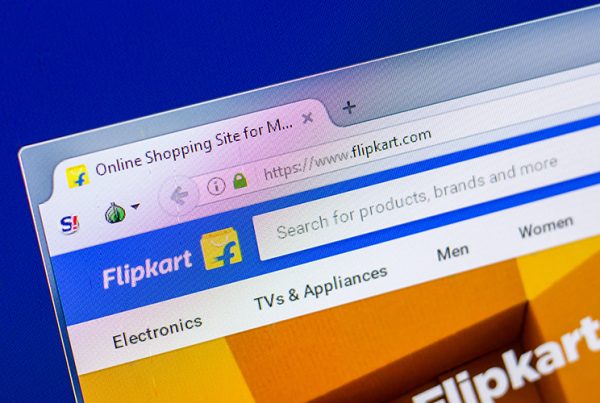Walmart Flipkart's Acquisition: A Paradigm Model for India’s Consumer Boom
Like Facebook, the founders of Google hatched their plans for world domination in a dorm room, and like Amazon they moved into a garage for their first office. In those early days a bell would ring in Amazon’s garage each time it sold a book, and the staff would check to see if they knew the buyer. But they stopped ringing the bell a long time ago: today the aggregate annual revenues of Facebook, Google and Amazon are $398 Billion, and their combined market capitalisation is $1.8 Trillion. That’s enough to give $1,842 to every man, woman and child in India, which oddly enough is almost exactly how much two former Amazon employees, Sachin and Binny Bansal, each had to start up Flipkart in 2007. To be exact they had $5,000, but who’s counting the change when the company’s just been sold to Walmart for $16 Billion.
Lucky them you might say, or more accurately their private equity investors (on any basis it’s some exit percentage), but the Flipkart success story is about more than mere numbers, eye watering though those are. Flipkart also tells us something important about key developments in the Indian economy since 2007, when the company was founded in a two bedroom Koramangala apartment (most of Bengaluru being too poor to have a garage on the Amazon and Google model).
Back in 2007 there were a mere 21 Million Internet users on the whole of the subcontinent, and only 840,000 of them were actually using the Internet to buy anything. If things had stayed that way there wouldn’t have been any bonanza for Sachin and Binny, and even if they weren’t one of the 83% of Indian tech start-ups that failed in the decade following 2007, they would probably still be in their apartment playing with computers. But of course things didn’t stay the same…not by any stretch of the imagination, and that’s where the boys struck lucky.
Within a decade of Flipkart starting out India had gone online with a vengeance: 117 Million Internet users by 2013, rising to 430 Million last year. The subcontinent’s burgeoning population has fuelled an explosion in consumer spending and the Internet boom is its most obvious expression so nobody should be surprised that the country with the fastest growing population on the planet is also its fastest growing large economy. And with all of those new consumers wired to their computers and looking for something to buy, Flipkart wasn’t slow to take advantage.
Which brings us to the second factor: most Internet users in India wouldn’t have dreamt of buying anything online in the 2007, wild west model of crypto capitalism, it was simply too unsafe and too untrustworthy. But again Flipkart struck lucky. Over the ensuing decade, Internet payment methods were significantly tightened up, made much safer and much more trusted so that today India now has an Internet market that feels safe to use.
And then there is the third factor: the Smartphone or, to be more precise, the Smartphone in the handbag or pocket of one India’s rapidly increasing number of under thirty year olds. The subcontinent is now the fastest growing market for Smartphone technology anywhere in the world, driven by a youthful demographic shift and leading to a fifteen fold growth in Smartphone enabled payments since 2012. Yet again, Flipkart was on the spot at the right time to take full advantage of the trend.
A burgeoning population, an increasingly urbanized consumer base with greater access to technology and a virulent youthful passion for its fashion accessory of choice: the mobile phone. Taken together they make up a paradigm for what focused, consumer driven demand can do to kick start a key market like the technology sector, and that’s just one reason why India is now the fastest growing large economy in the world. And that, when all is said and done, is the real lesson that we should take away from Flipkart: once, that is, we’ve finished talking about the money.
That, and one other thing too: Amazon, Facebook and Google and anyone else with plans for renting garage space would be well advised to watch their backs… because young Indian tech entrepreneurs are right behind you, and they’re breathing down your necks.
Nobody understands that potential for growth better than Red Ribbon Asset Management, which has placed India at the very heart of its investment strategies since the company was founded more than a decade ago. With an unrivalled knowledge of market conditions on the subcontinent, the Red Ribbon Private Equity Fund offers a unique opportunity to share in that potential.
[nectar_btn size="large" open_new_tab="true" button_style="regular" button_color_2="Accent-Color" icon_family="none" url="https://redribbon.co/investment-products/funds/private-equity-fund/" text="India Private Equity Fund"][nectar_btn size="large" open_new_tab="true" button_style="regular" button_color_2="Accent-Color" icon_family="none" url="https://redribbon.co/investment-products/" text="Investment Products"]
Red Ribbon CEO, Suchit Punnose said:
For anyone interested in exit multiples achievable on today’s markets, Walmart’s recent acquisition of Flipkart is a striking, if extreme example of likely trends in the subcontinent’s super hot technology sector. And of course, not everyone would have got in on the ground floor, but a return of $16 Billion on an initial investment of $5,000 certainly takes some beating.
We’re not expecting Red Ribbon’s Private Equity Fund to return that kind of exit multiple (who in their right mind could?), but Flipkart’s success story does seem to me to be an important bellwether for the trajectory of India’s markets, especially given the nature of the currents that seem to be driving its economy ever upward at the moment, some of which are touched on in the Article.
As the article points out, Flipkart’s phenomenal success is not just a matter of numbers: it is a reflection too of a perfect storm coming together within the subcontinent’s markets; a unique confluence of economic and social factors comprising together a very significant benchmark for the future.
And that’s something that it’s even more important to pay attention to than Walmart’s dollars…
[social_buttons full_width_icons="true" facebook="true" twitter="true" google_plus="true" linkedin="true" pinterest="true"]








Leave a Reply